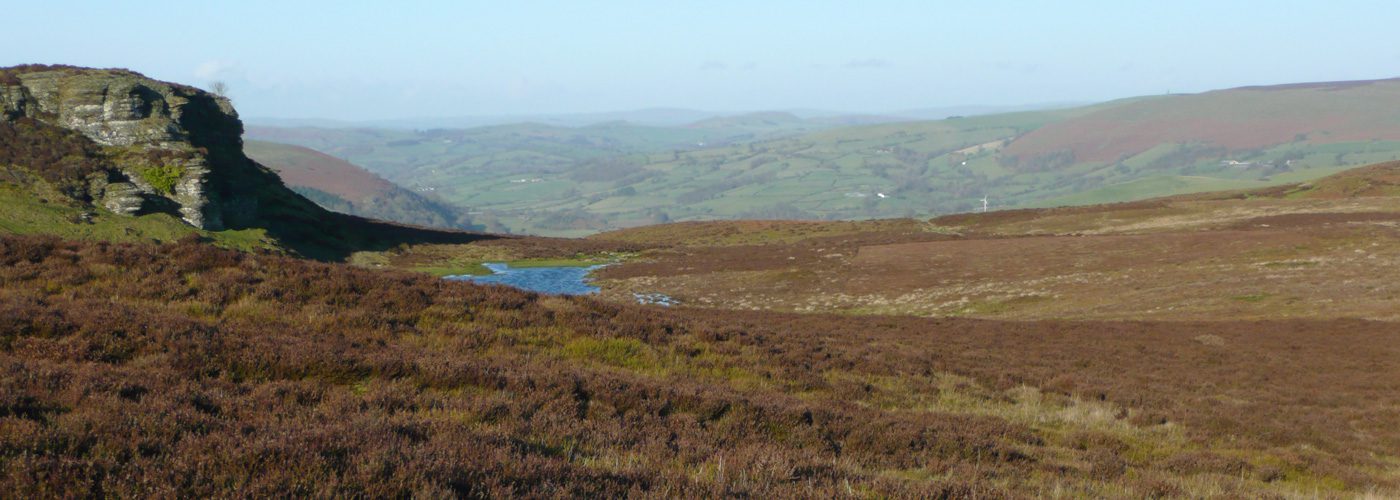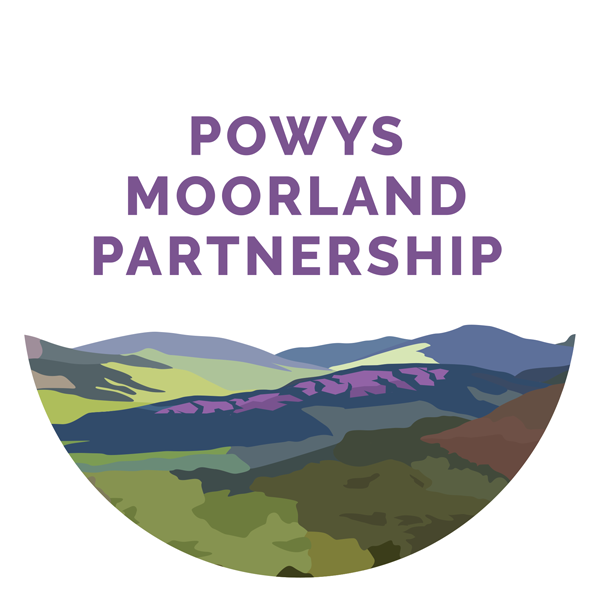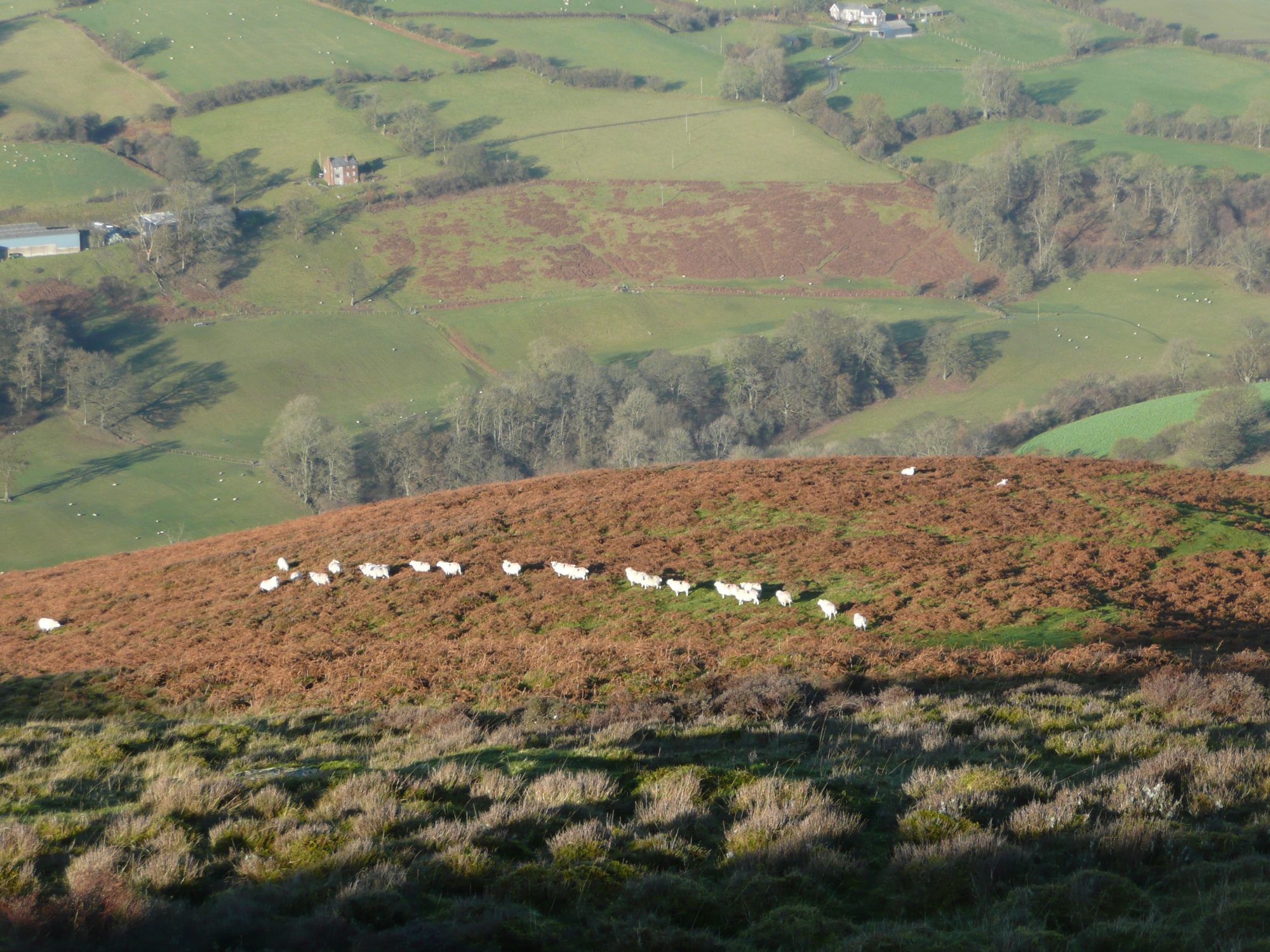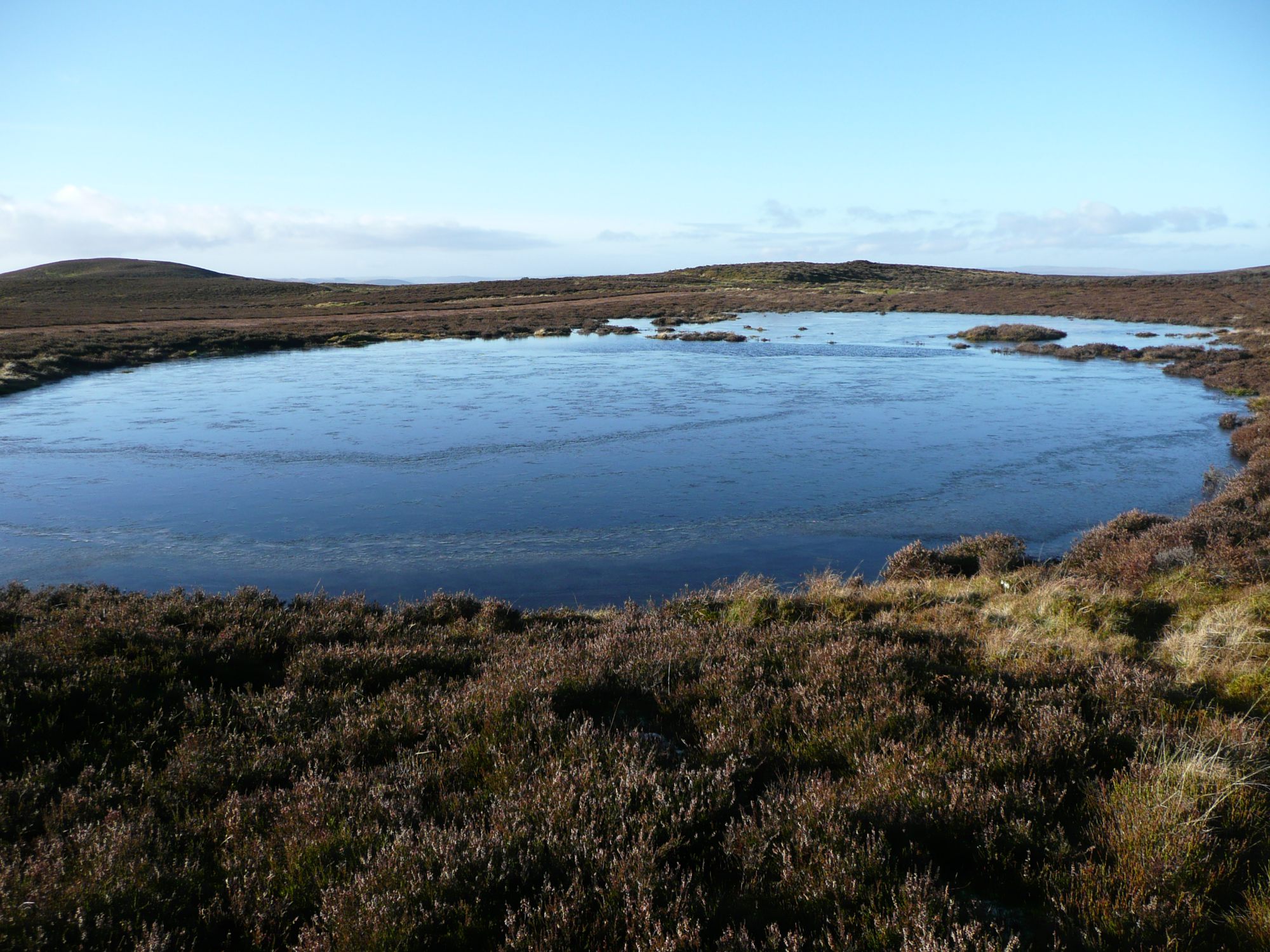That’s a question which The Powys Moorland Partnership hopes to provide some answers to.
There is of course no one model of sustainable land use, things will look different in different places. However three moors in mid-Wales provide the setting for a three year Welsh Government and EU funded project exploring how to achieve a workable and long-term balance between nature and people, including those who earn a living from the moors and those who enjoy them for recreation. It is the classic sustainable development mix of environment, economy and society.
The initiative includes Ireland Moor, Beacon Hill and Bal Bach, and its primary focus is on the aim of reversing the decline of our iconic moorland bird species such as the red grouse, curlew, lapwing, and golden plover by restoring their heather moorland habitats and employing keepers. The purpose of the Sustainable Management Scheme is to support collaborative landscape scale projects taking action to improve the resilience of our natural resources and ecosystems in a way that also delivers benefits to farm businesses and rural communities.
Collaboration is identified as the key to success and much of the effort in the project is on bringing the various interests together to discuss and agree the best way forward, so that everyone gets what they need from the moors. This is done through a series of public events and surveys, to gather the knowledge and opinions of those who use, own, farm, manage and visit the three moors.
When it comes to restoring the biodiversity on these moors, a huge amount of monthly data is being recorded to help the landowners to quickly spot the key areas in which to focus their attention. Judging by the numbers of foxes and corvids being removed, predator control is clearly a key priority. However, maintaining the heather with the invasion from gorse and bracken is also a big challenge. Following advice from Dick Bartlett of British Moorlands, the project has begun to focus upon customised heather cutting and burning techniques which are designed to offset the impact of high raptor densities.
Catherine Hughes is the Project Manager and much of her time is taken up speaking with the various interests from owners, keepers and graziers to recreational and tourism interests. Catherine says “By engaging with all interested parties we can start to agree on the 80% of what we want our landscapes to look like in the future, but it takes time and commitment to get the messages across. This collaboration is a new initiative therefore we have to keep involving all interested parties and keep up the momentum and strengthen the story as we proceed and more importantly demonstrate what the outcomes are through restoration of the ground. Engagement and more engagement and constant communication is key. School visits are hugely positive especially when the kids are so enthusiastic and feel able to ask any question they like particularly as it is their community. By having gamekeepers and graziers conduct the visits our aim is to find solutions where our landscapes have a bigger and better story to tell. The children clearly enjoy having gamekeepers and graziers explain what and why they do what they do. It really can’t be taught in the classroom. It also potentially inspires them to think of what they could get involved with in the countryside as a career.”
Our aim is to get 500 local children up on the moors over the three years and develop new ways through a variety of citizen science, arts, music etc to convey the beauty of our landscape and get them to help us celebrate their importance. We need the children to feel an ownership of them and so far it has been fantastic and the message from these kinds of events get quickly communicated to a much wider audience. The moorland story is complex with so many different aspirations but we are engaging with as many stakeholders as possible to see if ultimately we can boost the biodiversity and create quality jobs to bolster the rural economy and in the process build resilience into our Welsh moorlands.”
Additionally, the Project is collating data from the moors themselves. A baseline natural capital evaluation has been carried out by eftec. Some simple citizen science is also underway, with quadrats having been marked out so that measurements of percentage cover of plant species can be assessed, and vegetation height can be measured twice a year. In addition, some fixed-point photography has also been undertaken. All of these methods will enable progress to be measured in due course.
The owner of Ireland Moor, Will Duff-Gordon, is particularly interested in restoring some grouse shooting to the moors in Powys. Will has witnessed the steady decline in the health of these moors during his lifetime and he decided to kick start a much needed turnaround. In order to do this, it made sense to secure government support then begin an ambitious project that will stimulate investment in 20,000 acres of Powys moorland.
“Through multiple meetings and conversations we hope to create a better awareness of the public benefits that are performed by these moorland habitats. The end goal is that the land can continue to be enjoyed by many but within the boundaries of what is good for the land and its rare species. The public, farmers and landowners need to help the land become resilient to ever greater public use and provide ongoing funding for full time moorland keepers. We believe it’s possible to achieve this and with an excellent team of keepers, advisors, farmers and local facilitators we are well positioned. The Welsh Government have been excellent collaborators so far and we feel a great sense of duty to repay their faith and prove that employing moorland keepers should be the key driver to preserve and enhance the stunning mid Welsh moors”.
The Heather Trust is very pleased to be involved with the Partnership. We are providing the training element of the project, and we are also providing some administrative support to Catherine Hughes to help her pull the various threads together.
So far we have provided events on Integrated Management and Bracken Control, enabled a keeper exchange between Powys and Aberdeenshire, and we were able to organise an advisory visit from Dick Bartlett of British Moorlands Ltd.
We also have a best practice burning event planned for the Autumn and more to come next year. Our events have both a theory and a practical element to them and have been very well attended, with lots of good discussion, sharing of ideas and positive feedback.
For the bracken management day, we were able to draw on the expertise of Heather Trust President, Rob Marrs Agronomist Jonathan Harrington and Welsh Water, as well as pull in a range of companies providing bracken management equipment for practical demonstrations on Beacon Hill.
David Thomas manages Beacon Hill which is owned by the Crown Estates. Beacon Hill was once a very important Grouse moor in the nineteenth century attracting a lot of people from all over the UK and beyond. You can see the remains of the Victorian Shooting lodge on the hillside today and there was even a railway station to bring guests right up to the moor by train. David has been working on restoring the heather since 2014 and liaising closely with the graziers on the common so that a balance between heather, grazing and bracken can be achieved. David is already seeing the fruits of his work with more red grouse appearing along with other waders but the challenge of predators is very apparent. “Finding the balance will need more resources,” says David, “and more collaboration by all interested parties. With our permitted burning period being two weeks shorter in Wales compared to England and Scotland, we have a number of things against us so closer collaboration with WG and NRW is crucial.”
Our autumn event will be on Llantony Moor which is owned by Arwyn Davies and seven other partners – all from the medical profession. Bought almost 20 years ago Arwyn and his team’s interest in being part of the Partnership stems from their love of this moor with its abundance of heather not forgetting the spectacular views across the Brecon Beacons and beyond.
“As we have grown older the management of Bal Bach has meant older heather is evident which has impacted on the bird life.We want to keep the energy going and are proud to be part of the PMP which is helping us manage the moor with rotational cuts and burns along with keeping predators in check. We love our days on the moor in August/September.
It is a social event where we shoot a few grouse and enjoy a hearty picnic.”
The three years of the pilot is not long in terms of moorland management. To see these moors truly offer a sustainable mix of outputs will no doubt take longer, but it is an important start that is enabling real and important progress to be made. As the UK moves towards a future for land management that is no longer supported by the Common Agricultural Policy, the Partnership is testing out the natural capital balance that is prevalent in government thinking at the moment. Their efforts now should stand them in good stead for the rural policy that replaces the existing farm support and rural development system.




If you have to burn areas of heather as part of encouraging red grouse then I suggest Red Grouse and Red Grouse driving and shooting is not sustainable